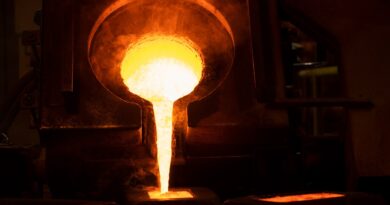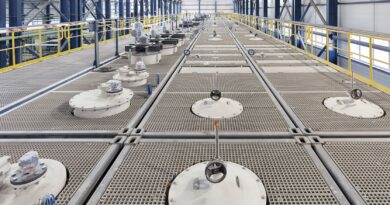Platinum is not just a catalyst
The PGM metal of Platinum has a unique combination of physical and chemical properties, which is why it is used so extensively in industry and manufacturing, where its high melting point, density, ultra-stability, extreme non-corrosiveness and catalytic effects are highly valued.
Indeed, one of platinum’s most important uses is as a catalyst – the presence of even a small molecule can speed up chemical reactions, reducing process energy needs and improving yields.
Biocompatible and well-tolerated by the body, platinum is used in numerous established medical treatments and is at the forefront of many new ones. It is radiopaque due to its density, giving high x-ray visibility, especially important in stents and clot-retrieval devices used to treat cardiovascular disease.
In addition, platinum is an excellent electrical conductor when used in pacemakers and cochlear implants. Compounds made from platinum are used in the treatment of many cancers.
Physical strength and stability, maintained at very high temperatures and in chemically hostile environments, support platinum’s use in glass manufacturing (including: flat screen TV glass; mobile phone glass; glass fibre for fabrication and thermal insulation; and high-quality data transmission).
PLATINUM IN MANUFACTURING
Due to its catalytic properties, platinum has been used in the commercial production of nitric acid – a key component of fertiliser – since the early 20th century. Around 90 % of nitrogen manufactured using platinum goes towards producing the c.190m tonnes of fertiliser nutrients used each year.
Elsewhere in the chemicals sector, platinum catalysts are used in propane dehydrogenation (PDH) facilities and to make paraxylene, an intermediate that is used in the production of plastics and polyester textiles. PDH is used in the production of propylene from propane.
The petroleum industry uses platinum in the refinery process – the process by which crude oil is transformed into more useful petrochemicals needed for a wide range of industrial applications. Petroleum refinery happens in several stages, and platinum catalysts are involved once the initial separation of the crude oil has occurred, helping to manufacture higher-octane fuels such as gasoline.
Platinum is also frequently used as a catalyst in the curing process in the manufacture of specialty silicones, where performance characteristics such as high purity, tear-resistance, transparency and low toxicity are important.
PLATINUM COMPONENTS
As well as in medical devices and glass products, platinum components are used in the manufacture of a vast number of other products.
Stable and corrosion resistant, with excellent conductivity, platinum is well-suited as a sensor component, for example, often in ‘mission-critical’ situations that call for reliability and efficiency. Airbags, breathalysers, resistance thermometers and carbon monoxide detectors all contain platinum.
In the tech industry, cloud-based data storage and management services are run from data centres that pool together a large number of servers to provide the capacity and applications needed to meet user demand. A server – like most computers – uses hard disk drives (HDDs) to store data.
Platinum plays a vital role in the magnetic media alloy used in modern HDDs.
Its inclusion in their ultra-thin magnetic storage layer improves thermal and magnetic stability, enabling higher density storage. Modern HDDs could not exist without platinum, and it will continue in the same crucial role in upcoming, next-generation technologies.
FUEL CELLS
The use of electricity from hydrogen fuel cells is gaining recognition as an alternative to electricity from fossil fuels or batteries in electric vehicles. A fuel cell is a device that generates electricity through an electrochemical reaction, not combustion.
In a platinum-based hydrogen fuel cell, hydrogen and oxygen are combined to generate electricity, with heat and water as the only by-products. Molecules of hydrogen and oxygen react and combine using a proton exchange membrane which is coated with a platinum catalyst.
Platinum is especially suited as a mobile / transport fuel cell catalyst as it enables the hydrogen and oxygen reactions to take place at an optimal rate, while being stable enough to withstand the complex chemical environment within a fuel cell and high electrical current density, performing efficiently over the long-term.
Fuel cells share many of the characteristics of a battery – silent operation, no moving parts and an electrochemical reaction to generate power. However, unlike a battery, fuel cells need no recharging and will run indefinitely when supplied with fuel. A fuel cell can have a battery as a system component to store the electricity it is generating.
Platinum-based hydrogen fuel cells are particularly important in providing clean electric mobility and are already being used to move goods across the supply chain – from hydrogen powered trucks to fork-lift trucks moving goods around a warehouse.
Passenger transportation is also using fuel cells, with hydrogen-fuelled ferries, trains, trams and buses appearing with increasing frequency in a number of cities around the globe. FCEVs combine the emissions-free driving of battery electric vehicles with the quick refuelling times and range of a traditional gasoline or diesel vehicles.
Many of the world’s leading automotive companies are developing, or have developed, hydrogen platinum-based fuel cell electric vehicles (FCEVs) as a preferred technology in response to the challenge of improving air quality and reducing tail-pipe emissions to zero.




